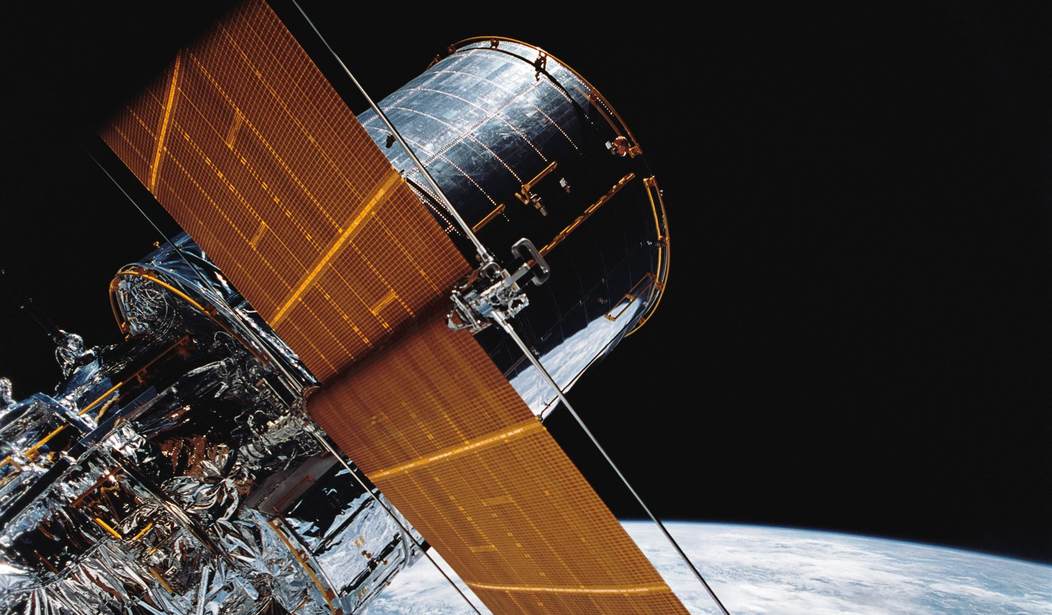The Hubble Space Telescope is one of the most productive scientific instruments ever built. "From its vantage point 320 miles (515 kilometers) above Earth, the telescope has sent home more than 1.6 million observations contributing to over 21,000 scientific papers," reports Space.com.
Hubble's contributions to our aesthetic appreciation of the universe can still make us catch our breath in awe and open our eyes a little wider, gazing at the wonder of creation.
Hubble has more than doubled its 15-year life expectancy. However, it almost became NASA's most humiliating and disastrous failure when, shortly after its launch, scientists discovered that the Wide Field and Planetary Camera and the Faint Object Camera were improperly shaped. They were too flat near their outer edges.
"The contractors that fabricated Hubble’s large mirror improperly set up a device used to test its curve or figure during the final shaping and polishing process," says NASA. The device called "null corrector" was off by 1.3 millimeters. As NASA described, Hubble was nearsighted.
A billion dollar fix was necessary that included the launch of a make-or-break repair mission that managed to use some spectacular engineering (and some "eyeglasses" for Hubble) that brought the mirrors back into focus.
One of the most memorable images snapped by the "new" Hubble was the breathtaking "Pillars of Creation."
35 years ago today, the Hubble Space Telescope was deployed into orbit
— Time Capsule Tales (@timecaptales) April 25, 2025
In the years since, Hubble has gathered more than 1.6 million observations & 430 terabytes of data
These are some of the best images - a thread 🧵
1. Pillars of Creation (2014) pic.twitter.com/rJOnWnwtlw
The European Space Agency (ESA), which operates Hubble jointly with NASA, said in a statement, "Hubble's legacy is the bridge between our past and future knowledge of a universe that is unbelievably glorious, as well as rambunctious."
"Rambunctious," indeed. The violent forces that created the "Butterfly Nebula" are both terrifying and beautiful.
3. NGC 6302, known as the "Butterfly Nebula pic.twitter.com/f837V4Qrl4
— Time Capsule Tales (@timecaptales) April 25, 2025
The Hubble Telescope's legacy lies not just in its iconic visuals, but in how science-packed they typically are, providing astronomers with the data to measure the age and expansion rate of the universe, witness the birth and death of stars, uncover the fine structure of distant galaxies and much more.
"Every modern astronomy textbook includes contributions from Hubble," a NASA blog post reads. The telescope's longevity is a testament to the ingenuity of its designers and the dedication of the teams and astronauts that have maintained and upgraded it over the years.
A rare trick of the light due to the gravity of a distant galaxy caused Hubble to see four images of the same supernova at once. Called "gravitational lensing," Space.com describes the phenomenon:
The light from a distant quasar, Q2237+0305 — located about 8 billion light-years away — was bent and magnified by the gravity of a much closer galaxy, ZW 2237+030, approximately 400 million light-years from Earth.
This effect produced four distinct images of the same quasar in a cross-like pattern around the central galaxy, often referred to as an Einstein Cross. This phenomenon occurs when the gravity of a massive object, such as a galaxy or galaxy cluster, bends and amplifies the light of objects positioned behind it. These cosmic lenses act as natural telescopes, magnifying the light from distant objects that would otherwise be too faint to study in detail.
7. NGC 2014 and its neighbour NGC 2020 which together form part of a vast star-forming region in the Large Magellanic Cloud, a satellite galaxy of the Milky Way, approximately 163,000 light-years away. pic.twitter.com/FP7MkO4nTI
— Time Capsule Tales (@timecaptales) April 25, 2025
The 34 years that Hubble has been working and sending back to Earth unbelievable images have been the most exciting in the history of astronomy. The years ahead promise even more discoveries that will rock science and flip conventional wisdom on its ear.










